Intensities and Lines of Flight
Intensities and Lines of Flight
Deleuze/Guattari and the Arts
Edited by Antonio Calcagno, Jim Vernon and Steve G. Lofts

London New York
Published by Rowman & Littlefield International, Ltd.
16 Carlisle Street, London, W1D 3BT
www.rowmaninternational.com
Rowman & Littlefield International, Ltd. is an affiliate of Rowman & Littlefield
4501 Forbes Boulevard, Suite 200, Lanham, Maryland 20706, USA
With additional offices in Boulder, New York, Toronto (Canada), and Plymouth (UK)
www.rowman.com
Copyright 2014 by Antonio Calcagno, Jim Vernon, Steve G. Lofts and contributors
All rights reserved. No part of this book may be reproduced in any form or by any electronic or mechanical means, including information storage and retrieval systems, without written permission from the publisher, except by a reviewer who may quote passages in a review.
British Library Cataloguing in Publication Information Available
A catalogue record for this book is available from the British Library
ISBN: HB 978-1-78348-031-9
ISBN: PB 978-1-78348-032-6
Library of Congress Cataloging-in-Publication Data
Intensities and lines of flight : Deleuze/Guattari and the arts / [edited by] Antonio Calcagno, Jim Vernon and Steve G. Lofts.
pages cm
Most of the papers that compose this volume were initially written for and presented at a conference called Intensities and Lines of Flight: Deleuze, Guattari and the Arts, held at the Centre for Advanced Research in European Philosophy at Kings University College, London, Canada, in May 2012.
Includes bibliographical references and index.
ISBN 978-1-78348-031-9 (cloth : alk. paper) ISBN 978-1-78348-032-6 (pbk. : alk. paper) ISBN 978-1-78348-033-3 (electronic)
1. Deleuze, Gilles, 19251995Aesthetics. 2. Guattari, Flix, 19301992Aesthetics. 3. ArtsPhilosophy. 4. Aesthetics, Modern20th century. I. Calcagno, Antonio, 1969 editor of compilation. II. Vernon, Jim, editor of compilation. III. Lofts, Steve G., 1959 editor of compilation.
B2430.D454I575 2014
111'.850922dc23
2013050712
 TM The paper used in this publication meets the minimum requirements of American National Standard for Information Sciences Permanence of Paper for Printed Library Materials, ANSI/NISO Z39.48-1992.
TM The paper used in this publication meets the minimum requirements of American National Standard for Information Sciences Permanence of Paper for Printed Library Materials, ANSI/NISO Z39.48-1992.
Printed in the United States of America
Abbreviations
AO | Gilles Deleuze and Flix Guattari, Anti-Oedipus: Capitalism and Schizophrenia, trans. Mark Seem, Robert Hurley and Helen Lane (Minneapolis: University of Minnesota Press, 1983). |
C1 | Gilles Deleuze, Cinema 1: The Movement-Image, trans. Hugh Tomlinson and Barbara Habberjam (Minneapolis: University of Minnesota Press, 1986). |
C2 | Gilles Deleuze, Cinema 2: The Time-Image, trans. Hugh Tomlinson and Robert Galeta (Minneapolis: University of Minnesota Press, 1989). |
DR | Gilles Deleuze, Difference and Repetition, trans. Paul Patton (New York: Columbia University Press, 1994). |
KF | Gilles Deleuze and Flix Guattari, Kafka: For a Minor Literature, trans. Dana Polan (Minneapolis: University of Minnesota Press, 1986). |
L | Gilles Deleuze, The Logic of Sense, ed. Constantin V. Boundas, trans. Mark Lester (New York: Columbia University Press, 1990). |
LS | Gilles Deleuze, Francis Bacon: The Logic of Sensation, trans. Daniel W. Smith (Minneapolis: University of Minnesota Press, 2004). |
PS | Gilles Deleuze, Proust and Signs, trans. Richard Howard (Minneapolis: University of Minnesota Press, 2000). |
TP | Gilles Deleuze and Flix Guattari, A Thousand Plateaus: Capitalism and Schizophrenia, trans. Brian Massumi (Minneapolis: University of Minnesota Press, 1987). |
WP | Gilles Deleuze and Flix Guattari, What Is Philosophy?, trans. Hugh Tomlinson and Graham Burchell (New York: Columbia University Press, 1994). |
Introduction
In his work on Proust, Gilles Deleuze asks, What is an essence, as revealed in the work of art? It is a difference, the absolute and ultimate Difference. Difference is what constitutes being, what makes us conceive being. This is why art, insofar as it manifests essences, is alone capable of giving us what we sought in vain from Life. We see in this early work the anticipation of what is to come with Deleuzes philosophy of multiplicity, the event and sensation as they relate to art. Deleuze sees works of art as individuated subjects insofar as they are not to be subsumed under the traditional objectifying and unifying rubrics of styles, genres and kinds, all typical ways we understand individual works of art as belonging to a school or form of expression. Such groupings obscure and even take away the very unique intensity of a work of art. Its very individuation, concretized in sensation and by its giving to us that which cannot be given by Life alone, manifests the work of art as a unique or different being. This is what Deleuze calls the essence of an artwork. If we take seriously what Deleuze says, we no longer have movements and styles of art; rather, we have a multiplicity of different artworks, each marked with its own unicity or essence.
Later in his life, Deleuzes collaboration with Flix Guattari had profound implications for his theory of art. Deleuze himself remarked that the collaboration of the two thinkers was so intimate that it became impossible to tell what properly belonged to whom, and even their single-authored works bear the considerable imprint of the others ideas. The chapters assembled here pay close attention to the individual as well as collaborative works of both philosophers, always making clear what is properly collaborative, understood as Deleuze-Guattari, and what is proper to each philosopher alone.
The last decade has witnessed a veritable explosion of studies devoted to exploring the philosophical contributions of Deleuze and Guattari to the philosophy of art. While one finds a larger number of books devoted to cinema. By treating a wide variety of artistic media through a panoply of theoretical lenses (philosophy, art history, communication studies and literary theory), as well as including texts by working artists and curators, we have produced a multi-themed, interdisciplinary and international collection of chapters on Deleuzo-Guattarian aesthetics that serves to complement the existing literature by adding both practical applications and critical challenges to their philosophy of art.
Although volumes exist that focus on a number of arts, especially film, dance, poetry and the digital arts. Given that contemporary art is so vast and diverse, we feel that our volume can also contribute to theoretical issues and artistic practices in the arts today.
Most of the chapters that compose this volume were initially written for and presented at a conference called Intensities and Lines of Flight: Deleuze, Guattari and the Arts, held at the Centre for Advanced Research in European Philosophy at Kings University College, London, Canada, in May 2012. Other papers were solicited from various scholars and artists, mindful of the thematic parameters discussed above. The first part of the book focuses on Deleuze and Guattaris aesthetic theory, examining such issues as sensation, performance, perception, reception and time. The chapters do this from two specific vantage points: either they look at specific Deleuzo-Guattarian aesthetic concepts and bring them into direct discussion with other philosophical problems (for example, that of time and the duration of the past) or they focus on specific aspects of Deleuze and Guattaris philosophy of art, critically challenging certain key assumptions, including those surrounding representation and perception. Central here are methodological considerations in aesthetic theory, usually informed by specific artistic practices or works. The second part of the book focuses on the application of Deleuzo-Guattarian concepts to diverse artistic practices, including television, drawing, architecture, literature and cinema. By engaging artists and philosophers, we hope to present not only critical appraisals of Deleuzo-Guattarian aesthetic theory but also its effects on artists working in diverse fields, including architecture, drawing and installation art. Here, the reader will see how artists and curators working in and with different media both interpret Deleuze and Guattari and challenge their respective claims on, for example, subjectivity, the nomad, difference and even repetition: artistic practices manifest potential limits of Deleuzo-Guattarian aesthetic theory.
Next page
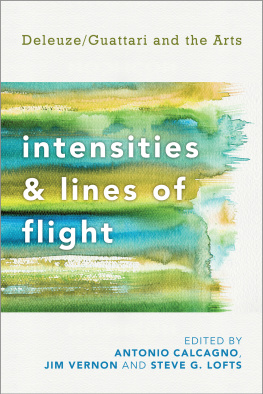
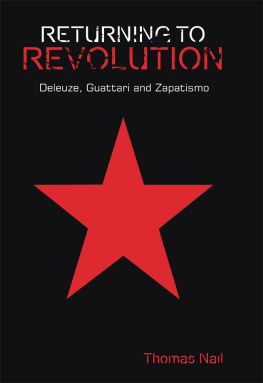
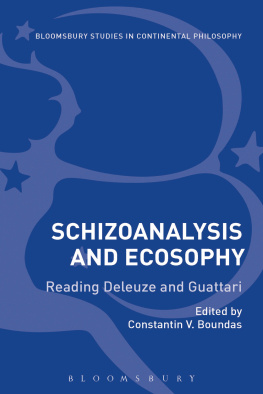
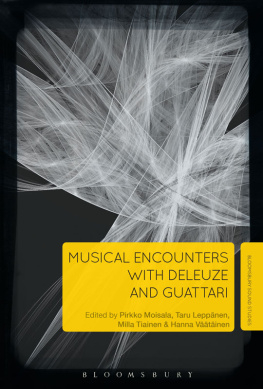
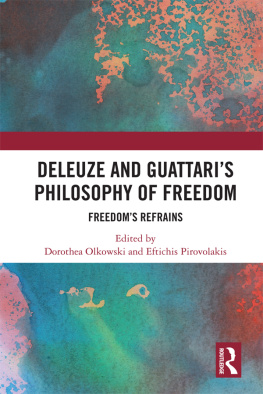
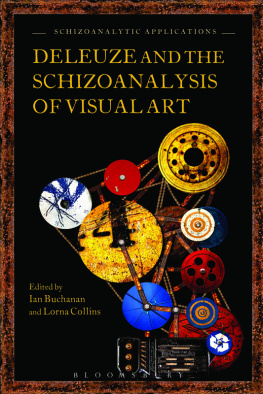

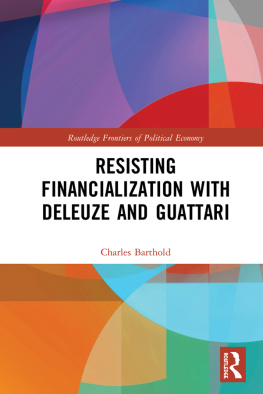
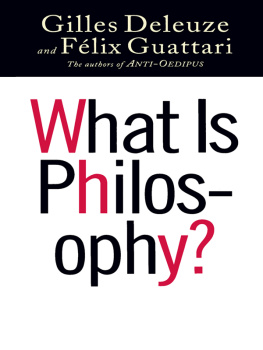

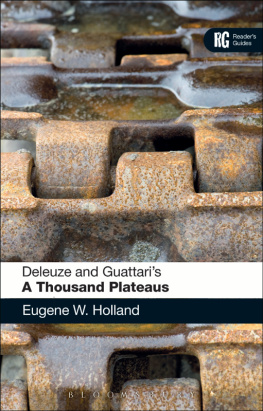
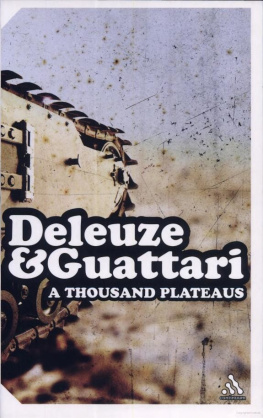


 TM The paper used in this publication meets the minimum requirements of American National Standard for Information Sciences Permanence of Paper for Printed Library Materials, ANSI/NISO Z39.48-1992.
TM The paper used in this publication meets the minimum requirements of American National Standard for Information Sciences Permanence of Paper for Printed Library Materials, ANSI/NISO Z39.48-1992.